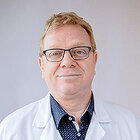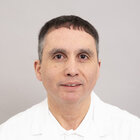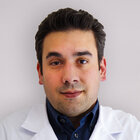Hospital Ear, Nose and Throat (ENT) Department Sion
Otolaryngology, commonly known as ENT (Ear, Nose and Throat), is the medico-surgical speciality which treats diseases of the nose, of the throat and of the ears, as well as cancers of the head and neck. It thus treats paediatric to geriatric patients suffering from functional, infectious and cancerous diseases.
Rhinology deals with the treatment (either medical or surgical) of conditions affecting the nasal cavities and paranasal sinuses. In surgical terms, this mainly involves septoplasties (straightening a crooked nasal septum), partial turbinectomies (reducing the size of large inferior nasal concha), polypectomies (extraction of polyps), sinusotomies (opening up the sinuses), but also rhinoplasties (correcting a nasal imperfection) or the excision of benign or malignant tumours of the nasal cavities. The vast majority of surgical procedures are carried out using endoscopic monitoring, without opening up the face. The hospital was also recently equipped with a tomodensitometric monitoring device, known as a neuronavigation system, which allows for safer interventions in high-risk areas.
ENT doctors also provide diagnosis and treatment for diseases of the mouth and throat, be they infectious (stomatitis, throat infection, peritonsillar abcess…), mechanical (large tonsils causing sleep apnea in children and encouraging snoring in adults…), or tumoural (cancers of the tongue, of the soft palate…).
Otology allows us to solve ear problems, whether they be infectious (otitis externa, otitis media, mastoiditis…), functional as in the case of presbyacusis (age-induced impaired hearing), otospongiosis (disease affecting the middle ear, primarily in women, and which leads to impaired hearing), vertigo involving a tumour, such as a cholesteatoma (benign tumour of the middle ear leading to repeated infections and impaired hearing) or cancers of the external auditory canal, perforated eardrums... Here again, medical and surgical treatments are closely connected, and the use of an otomicroscope is essential.
Phoniatrics is a subspeciality of ENT which studies voice disorders. These can be the result of vocal chord paralysis, of nodules or polyps, of benign or malignant tumours, of Reinke’s oedema in smokers, of presbyphonia (vocal difficulties connected to ageing), etc. The treatment for these conditions may be drug-based (treatment of a possible gastro-oesophagal reflux), re-educational (logopaedics) or surgical, the latter often involving a microscope and a laser.
Conditions affecting the salivary glands can be infectious (parotitis, submaxillaritis…), inflammatory (sialolithiasis = salivary calculus) or tumoural. Sialendoscopy is a new technique allowing us to examine the excretion canals of the salivary glands using a micro-camera, in order in some cases to delay excision of the salivary gland.
Finally, cervico-facial surgery deals with tumours of the face and neck. It covers excision of the salivary glands (parotidectomy, sub-maxillectomy…), of the thyroid in case of goitre or of cancer, of cysts that are present at birth or that appear progressively (branchial cysts, cysts of the thyroglossal duct, cystic lymphangioma…) and of course of cancers, which can involve heavy surgery that may require reconstructive work.
The ENT team at Centre Hospitalier du Valais Romand (CHVR) works in close cooperation with Centre Universitaire Vaudois (CHUV) and engages in intensive scientific activity; it includes doctors, logopaedists and nurses with experience in the different aspects of this speciality, and takes advantage of the latest technological developments in order to provide the best possible care to patients in the Canton of Valais.
Organisation
-
Centre Hospitalier du Valais Romand
Sion
Av. Grand-Champsec 80, 1951 Sion +41(0)27 603 41 00 chvr.consult.orl@hopitalvs.ch




